The Geometry Essentials Collection
Houdini Geometry Essentials 06
Scattering & Distribution
What You’ll Learn
Scattering – simple on the surface, but below it’s all driven by you know what – attributes. In this course we’re diving deep into controlling attributes using noise and random functions, and learning how to manipulate attributes using colour correction techniques. These are essential skills for creating awe-inspiring environments and richly detailed objects. Best of all, you’ll learn how to precisely control the distribution of values, and it’s this knowledge that will serve you time and time again in all kinds of procedural workflows.
By the end of this course, you’ll have a deep understanding of:
- How noise and random functions differ - and when to use one over the other
- The role of the random function in point scattering
- How point scattering and point relaxing work
- The relationship between pixel and attribute values
- How colour correction techniques can be used to control, adjust and manipulate attributes
- The way to generate and control orientation attributes using the Scatter & Align SOP
Course Syllabus
Let’s talk details
Section 01
Noise Versus Random
They say variety is the spice of life. We say the ability to automate variation is crucial in procedural workflows. A little less catchy, but no less true. Houdini’s noise and random functions help us do this in different ways. We’ll examine their technical differences and cover practical examples for each one – like using noise to create natural and organic distribution, and using random to avoid patterns and trends.
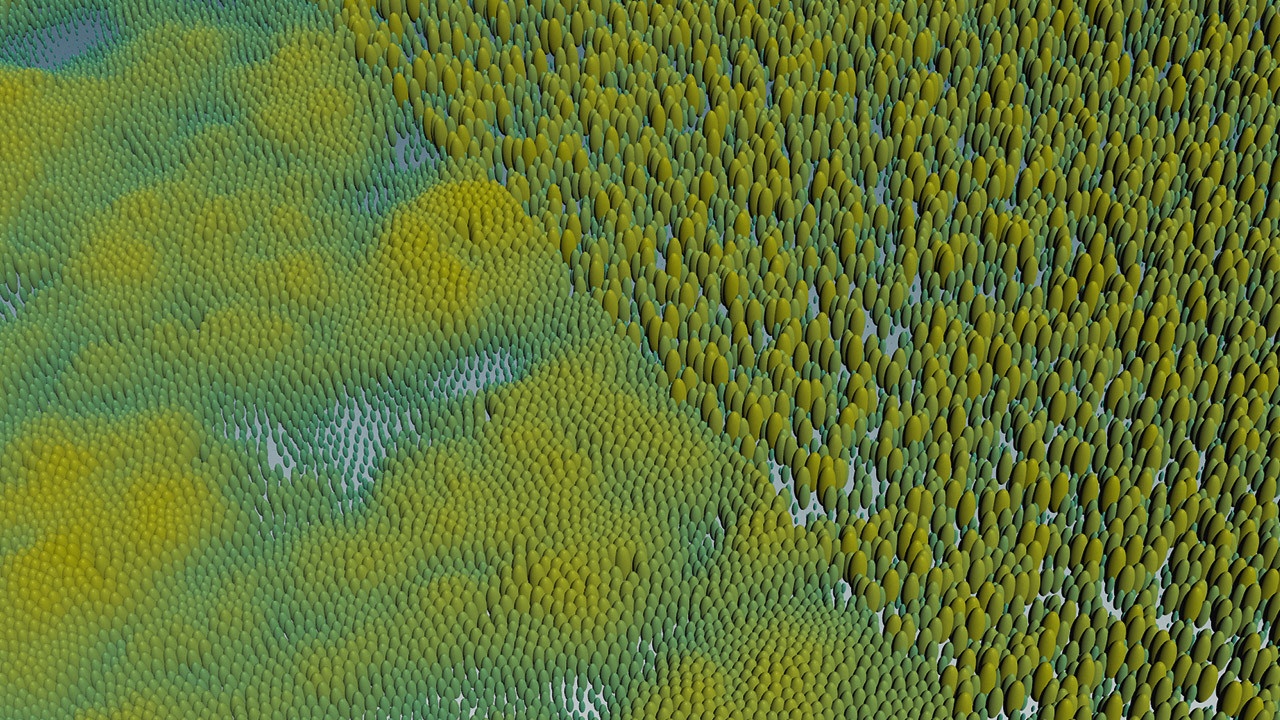
Lessons
1. Noise vs Random: Graphing the Outputs
2. Noise vs Random: Relationships and Trends
3. Noise vs Random: The Organic Nature of Noise
4. Noise vs Random: Comparing the Distribution Ranges
4 Tutorials 20 Minutes
Section 02
Distribution & Density
Strap in! It’s time for a new practical project. This one’s all about controlling the distribution of geometry across surfaces. These are the skills you need to craft realistic environments, like grassy fields, lush forests, or in our case, clumps of mushrooms. We’ll teach you how to combine random functions with point relaxing to get the ideal spread of clumped vs evenly spaced points, and how to create masks with attributes to dictate exactly where your points should and shouldn’t go.
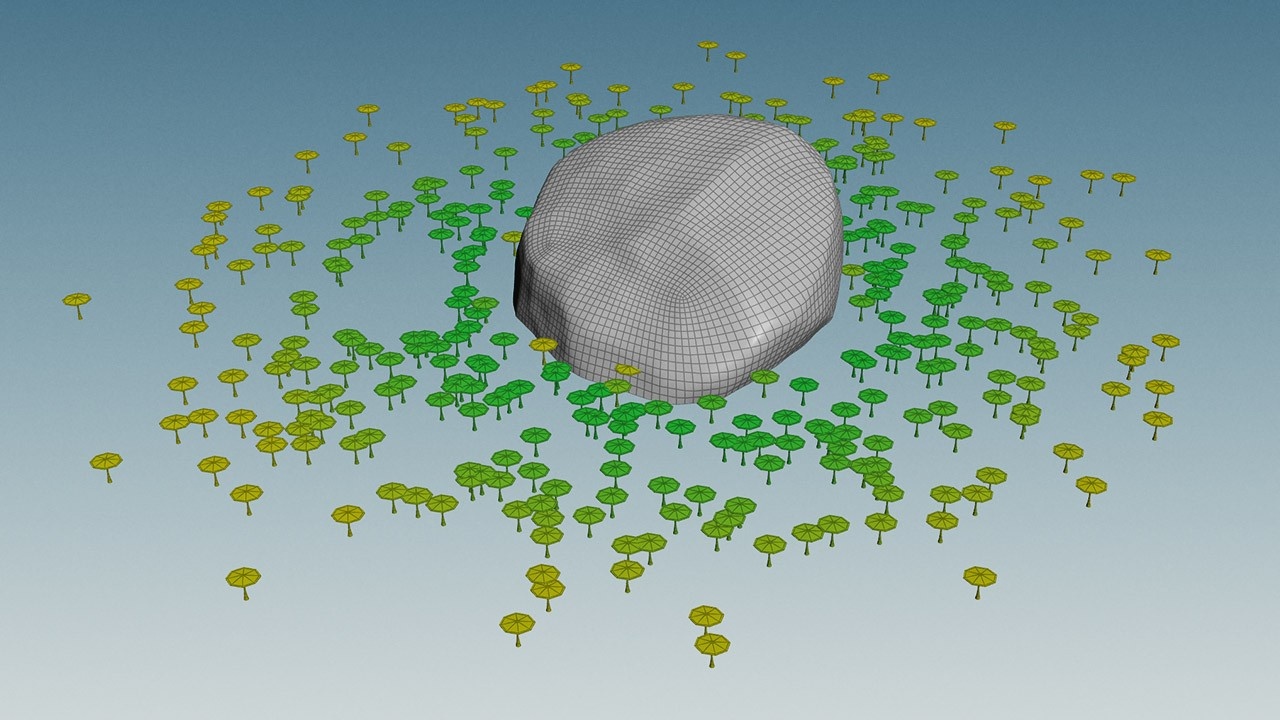
Lessons
1. Exercise Intro & Scattering Points
2. Running Over Numbers & the Clumping Nature of the Random Function
3. Point Relaxing
4. Working with Point Density
5. Controlling Point Density with Attributes
5 Tutorials 25 Minutes
Section 03
Correcting, Adjusting & Compositing Attributes
We’re not done with those mushrooms yet! Picking up where we left off, we’re continuing our practical project and taking you even deeper into attributes. You see, attribute values are a lot like pixel values. All the techniques you’re used to using in image editors like Photoshop can be used to manipulate attributes in Houdini. Neat, huh? We’ll look at three classic colour correction tools in COPs and show you how you can use VOPs to make the same changes to attributes.
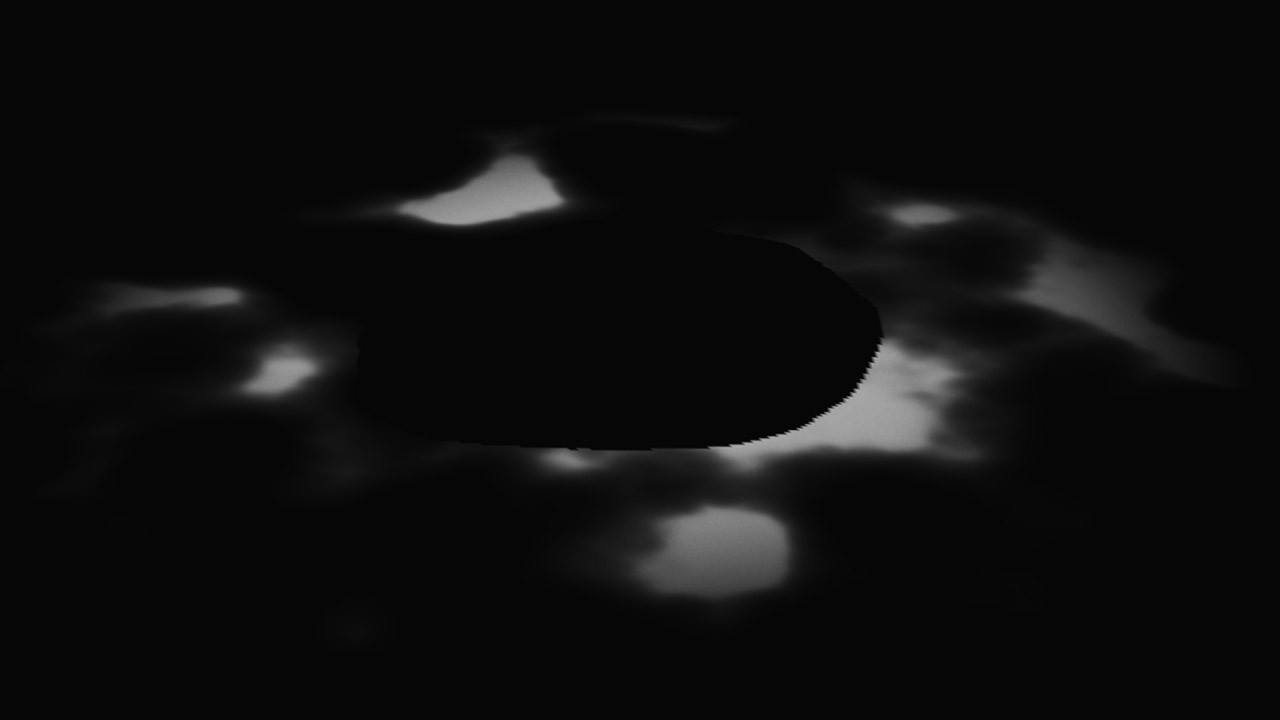
Lessons
1. Geometry Resolution and Attributes
2. Comparing Attribute Values to Pixel Values
3. Correcting the Noise Output: Colour Correct & Levels
4. Correcting The Noise Output: Curves & Ramps
5. Compositing Attributes
6. Working with the Mask Controls
6 Tutorials 34 Minutes
Section 04
The Relationship Between Attribute VOPs and Attribute SOPs
Houdini is far more than a set of tools for creating amazing content, it’s also a framework for creating our own custom tools. If the tool we need doesn't exist, we can create our own. In this section, you’ll see how learning essential VOP nodes in the last course has provided you with not only the components you need for building your own operators, but also the knowledge to help you understand and navigate a multitude of new and different SOPs.
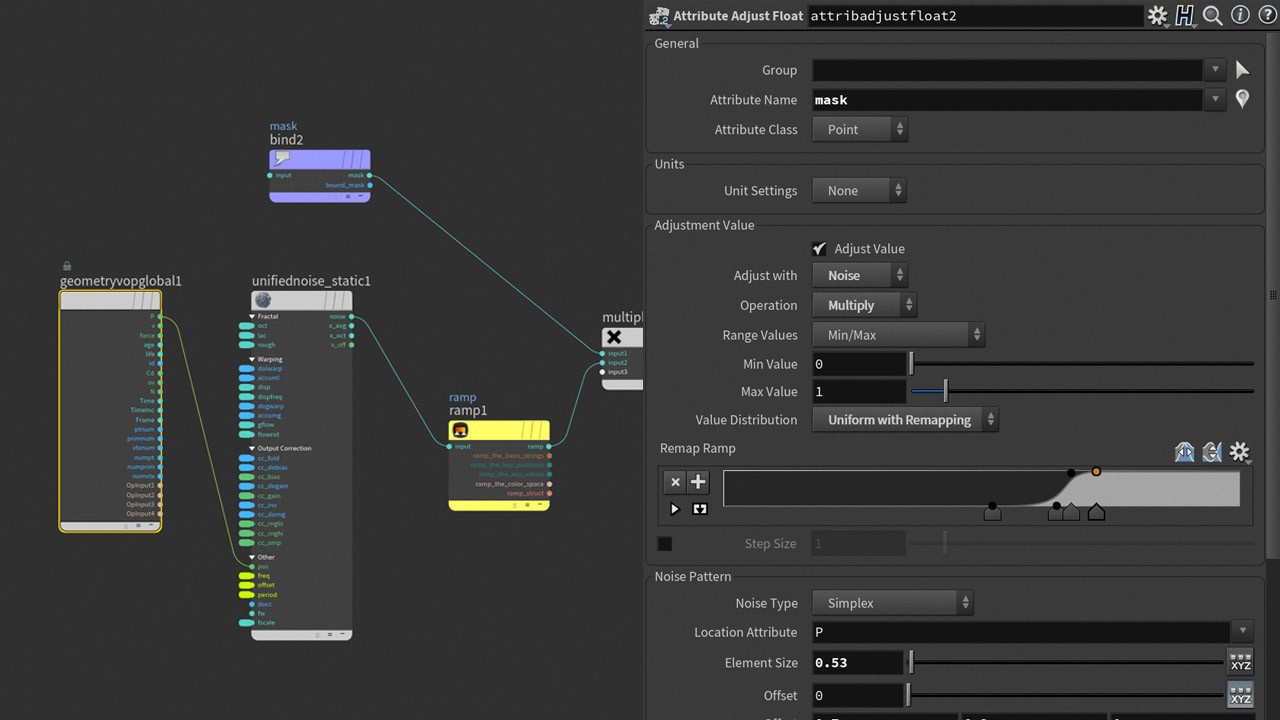
Lessons
1. Replacing an Attribute VOP with the Attribute Adjust SOP
2. Houdini as a Framework for Creating 3D Tools
3. Using Noise to Control Size
3 Tutorials 16 Minutes
Section 05
Controlling Random Value Distribution
It might sound counterproductive to try and control randomness, but trust us, generating random values and dictating their distribution can indeed be done with accuracy and finesse. The random function is used by many different surface operators, so to really get to grips with it, we teach you how to use the Gain and Bias VOPs, along with ramp parameters, to command your random values with precision.
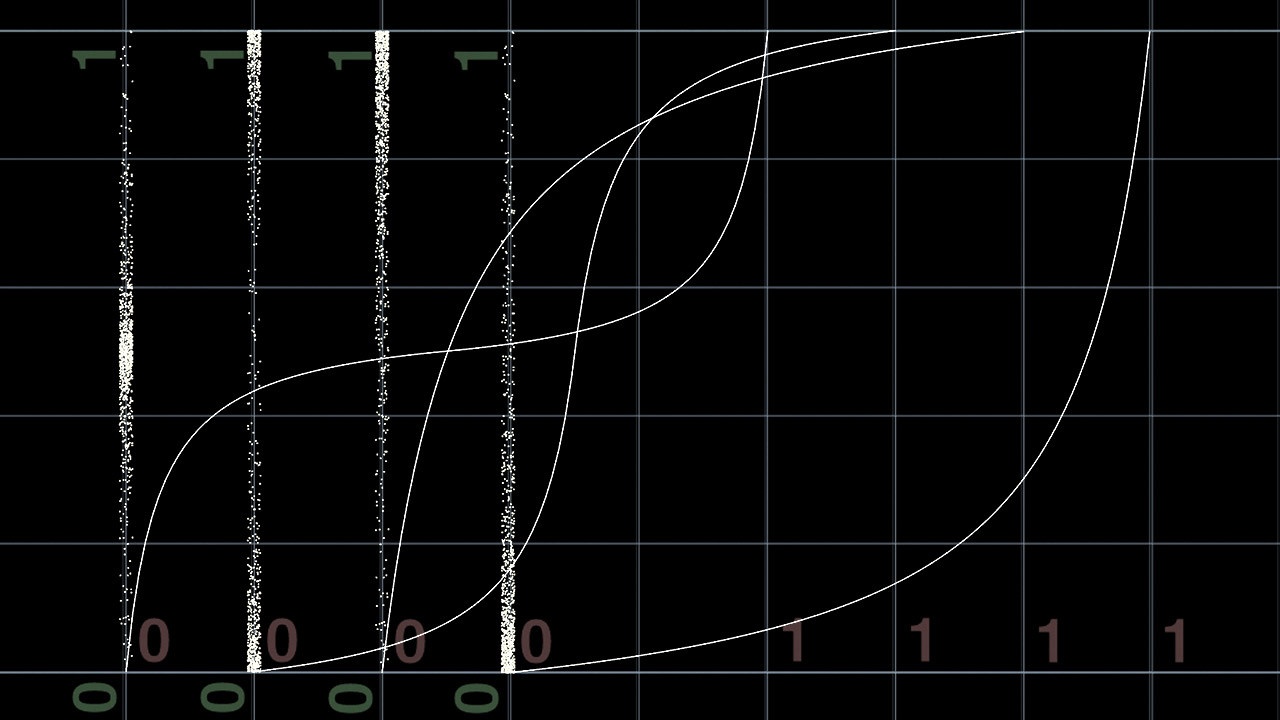
Lessons
1. Randomising the Scale Attribute in VOPs
2. Controlling Random Distribution Using Bias & Gain
3. Graphing the Bias & Gain Controls
4. Controlling Random Distribution Using a Ramp Parameter
5. Comparing the Custom Built SOP to the Attribute Randomise SOP
5 Tutorials 26 Minutes
Section 06
The Scatter and Align SOP
Houdini’s tool-building capabilities are in the spotlight once again as we step through a magnificent recent release from SideFX – the Scatter and Align SOP. Brimming with aha moments, this section puts a tonne of your previous learnings into play as you master using this new node to scatter points, control randomness and, most significantly, generate and control the Orient attribute.
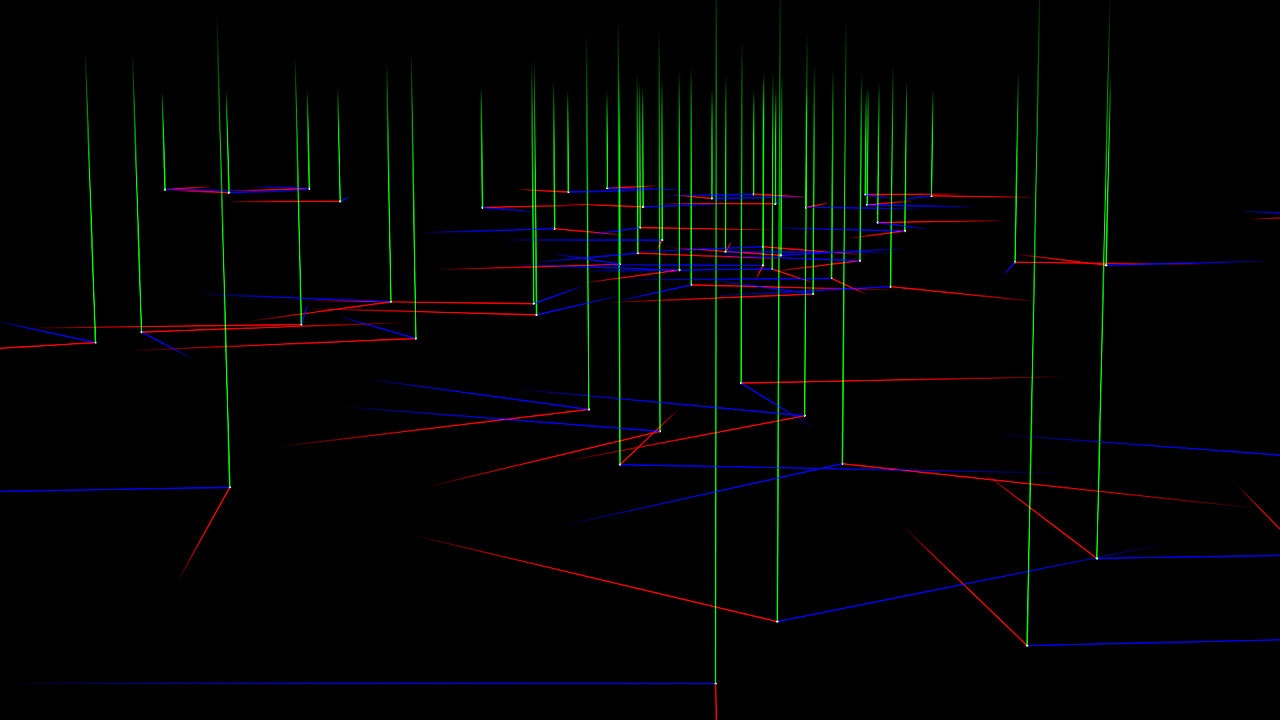
Lessons
1. The Scatter & Align SOP: Scattering Points
2. The Scatter & Align SOP: Randomising Rotation
3.The Scatter & Align SOP: The Orient Attribute
4. The Scatter & Align SOP: Adding Attributes to Existing Point Clouds
4 Tutorials 19 Minutes
Section 07
Testing and Optimising
It’s all about improving the efficiency and flexibility of our networks as we wrap up this bumper course. The order of operations comes under the microscope, and point count goes under the knife. Once again, we draw parallels between working with pixels and working with attributes as we use masking and attribute blurring to isolate the regions of geometry we want to operate on.

Lessons
1. Distributing on Different Terrains & Objects
2. Optimising the System - Order of Operations
3. Optimising the System - Region of interest
4. Summary
4 Tutorials 22 Minutes
With Hipflask, the more you learn the more you save.
Pick a single course or save by bundling your courses together. The choice is yours.

Geometry Essentials
04+05+06
The Attributes, VOPs & Scattering Bundle
$214.97 $169.99
Save 20% by bundling three courses

Geometry Essentials
01+02+03+04+05+0+07+08
The Super Bundle
$634.92 $399.99
Save 37% by bundling eight courses
Need Hipflask for an entire team, studio or classroom?
Be the first to get new courses
New course updates straight to your inbox, along with special offers and discounts!










